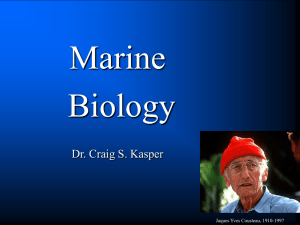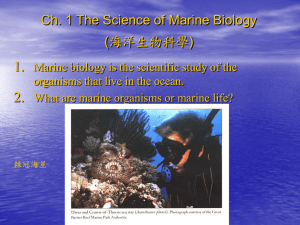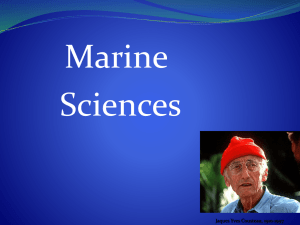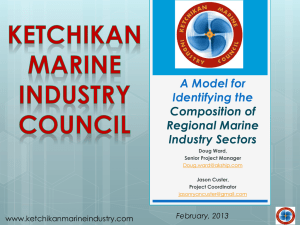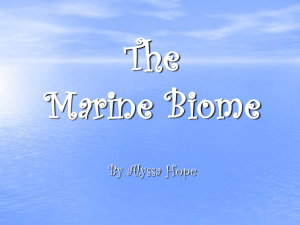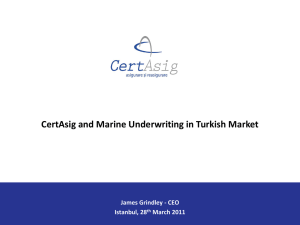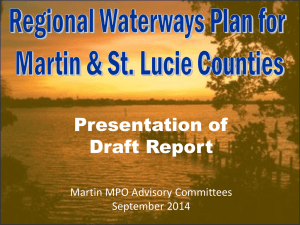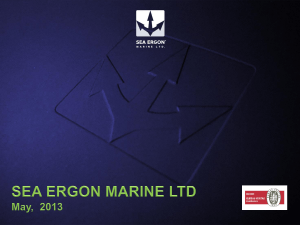The Law of the Sea and Intellectual Property Law
advertisement
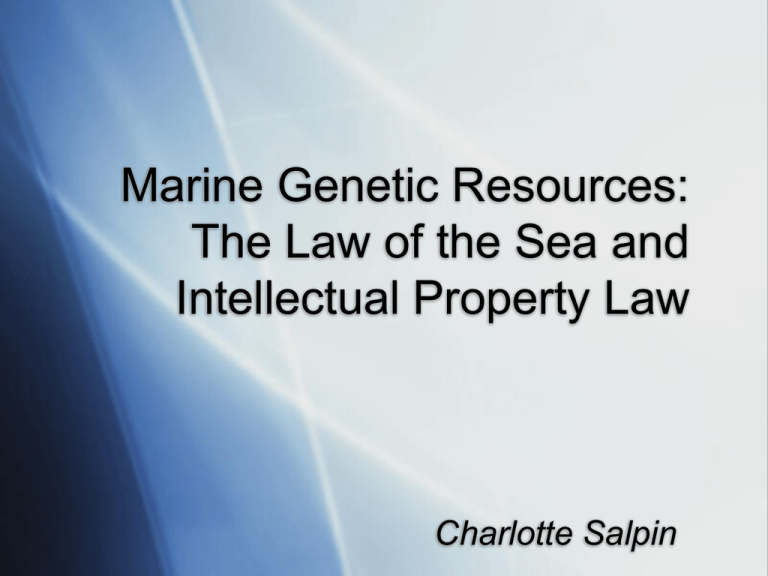
Marine Genetic Resources: The Law of the Sea and Intellectual Property Law Charlotte Salpin OUTLINE Setting the scene Relevant provisions of UNCLOS Relevant intellectual property law The nexus Objectives of UNCLOS and Intellectual property law Some issues of compatibility Conclusions RELEVANT PROVISIONS OF UNCLOS Areas Beyond National Jurisdiction High Seas (Part VII) Area (Part XI; 1994 Agreement) Marine Scientific Research Part XIII Technology Transfer Part XIV MARINE SCIENTIFIC RESEARCH GENERAL PRINCIPLES No unjustifiable interference with other legitimate uses of the sea (Art. 240) Shall not constitute the legal basis for any claim to any part of the marine environment or its resources (Art. 241) States and competent international organizations are required to ‘make available by publication and dissemination through appropriate channels . . . knowledge resulting from [MSR]’ and ‘actively promote the flow of scientific data and information and the transfer of knowledge resulting from [MSR], especially to developing States’ (Art. 244) MARINE SCIENTIFIC RESEARCH AREAS BEYOND NATIONAL JURISDICTION High Seas States have the right to conduct MSR in the water column beyond EEZ (Art. 257) Scientific research, a freedom of the High Seas (Art. 87) Area States have the right to conduct MSR in the Area (Art. 256) Carried out exclusively for peaceful purposes and for the benefit of mankind as a whole (Art. 143.1) ISA coordinates and disseminates the results of research and analysis, when available (Art. 143.2) States to promote international cooperation, including by effectively disseminating the results of research and analysis, when available, through ISA or appropriate channels (Art. 143.3) RELEVANT INTELLECTUAL PROPERTY LAW Patents Trademarks (e.g., “Abyssine”) Geographical indications (e.g., “Rainbow”) TRIPS Budapest Treaty [Filed at any stage of R&D] Madrid system (Agreement and Protocol) [Downstream IP] Paris Convention Lisbon Agreement TRIPS [Downstream IP] PATENTS Patentability criteria Novelty Inventive step Capable of industrial application Patentable subject-matter Disclosure of invention Patent owners NEXUS Objectives UNCLOS peaceful uses of the seas and oceans equitable and efficient utilization of their resources conservation of their living resources study, protection and preservation of the marine environment economic and social advancement of all peoples of the world Intellectual Property Reward intellectual effort Stimulate research Promote creativity and innovation Promote dissemination and application of innovation Encourage fair trading (WIPO Handbook) Relationship among conventions UNCLOS (art.311) “Shall not alter the rights and obligations of States Parties which arise from other agreements compatible with this Convention and which do not affect the enjoyment by other States Parties of their rights or the performance of their obligations under this Convention” Patent instruments TRIPS: silent Budapest Treaty: silent NEXUS Questions of compatibility Is patenting a claim to the marine environment or its resources? Is the degree of confidentiality required prior to the filing for patents in order to safeguard the novel character of an invention compatible with the requirement for dissemination and publication of data and research results? Claims of exclusivity over marine resources ARTICLE 241 No legal basis for ter itorial and maritime claims No legal basis for claim to the exclusive use of marine resources No legal basis for ownership claim over marine resources No legal basis for claim to the exclusive exploitation of marine resources Publication and dissemination of research results Issue of ownership of the results: who holds the right to proceed to publication and dissemination? Issue of how the results are published and disseminated (time and mode) NEXUS Avenues for consistent implementation Use of exceptions of the system, e.g.,: Research use (non-commercial uses) exemptions Exclusion of diagnostic, therapeutic and surgical methods for the treatment of human beings or animals from patentability Compulsory licenses Conditions related to publication and dissemination CONCLUSIONS Compatibility between the law of the sea and IP law is largely an issue of implementation Need for studies on how patent instruments have been implemented in relation to marine genetic resources from ABNJ Explore possibility of using other types of IP: trademarks and geographical indications (downstream patenting); open-source licensing THANK YOU!


